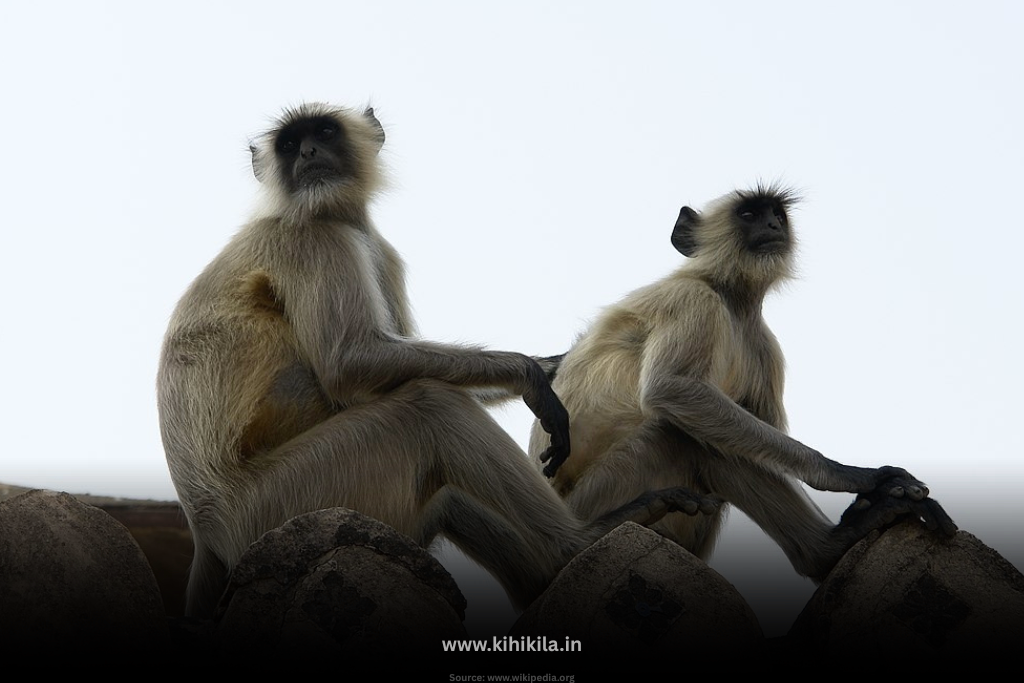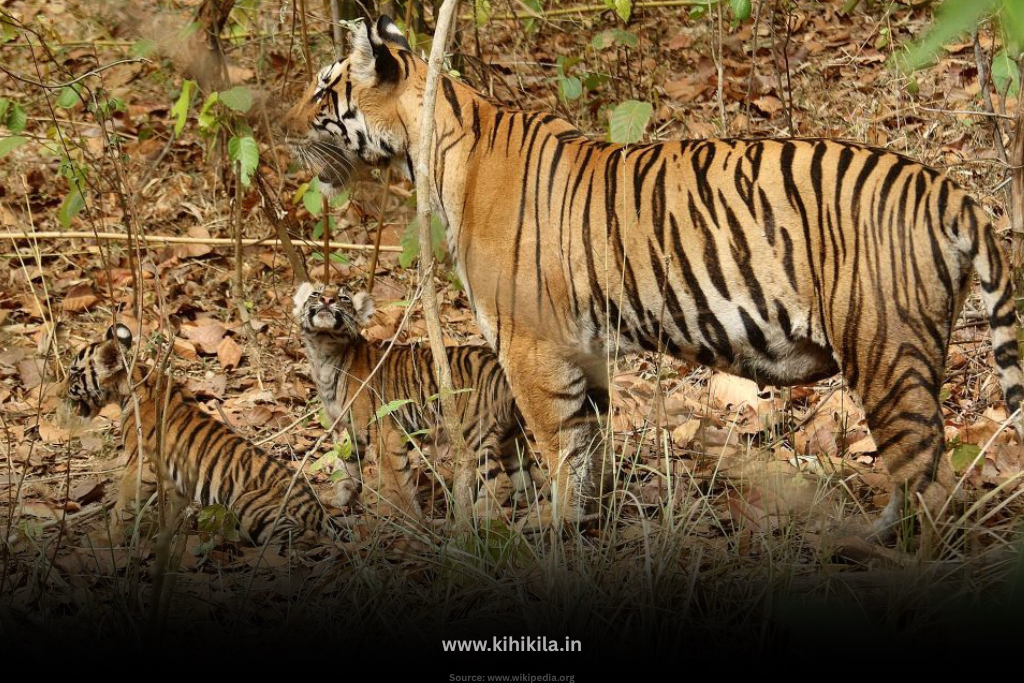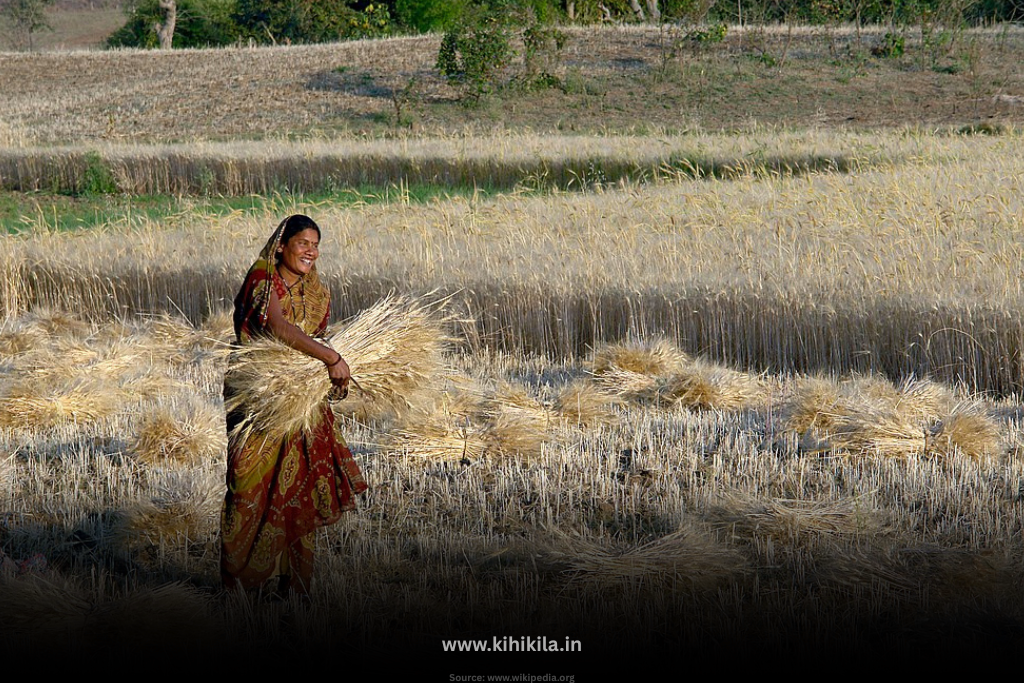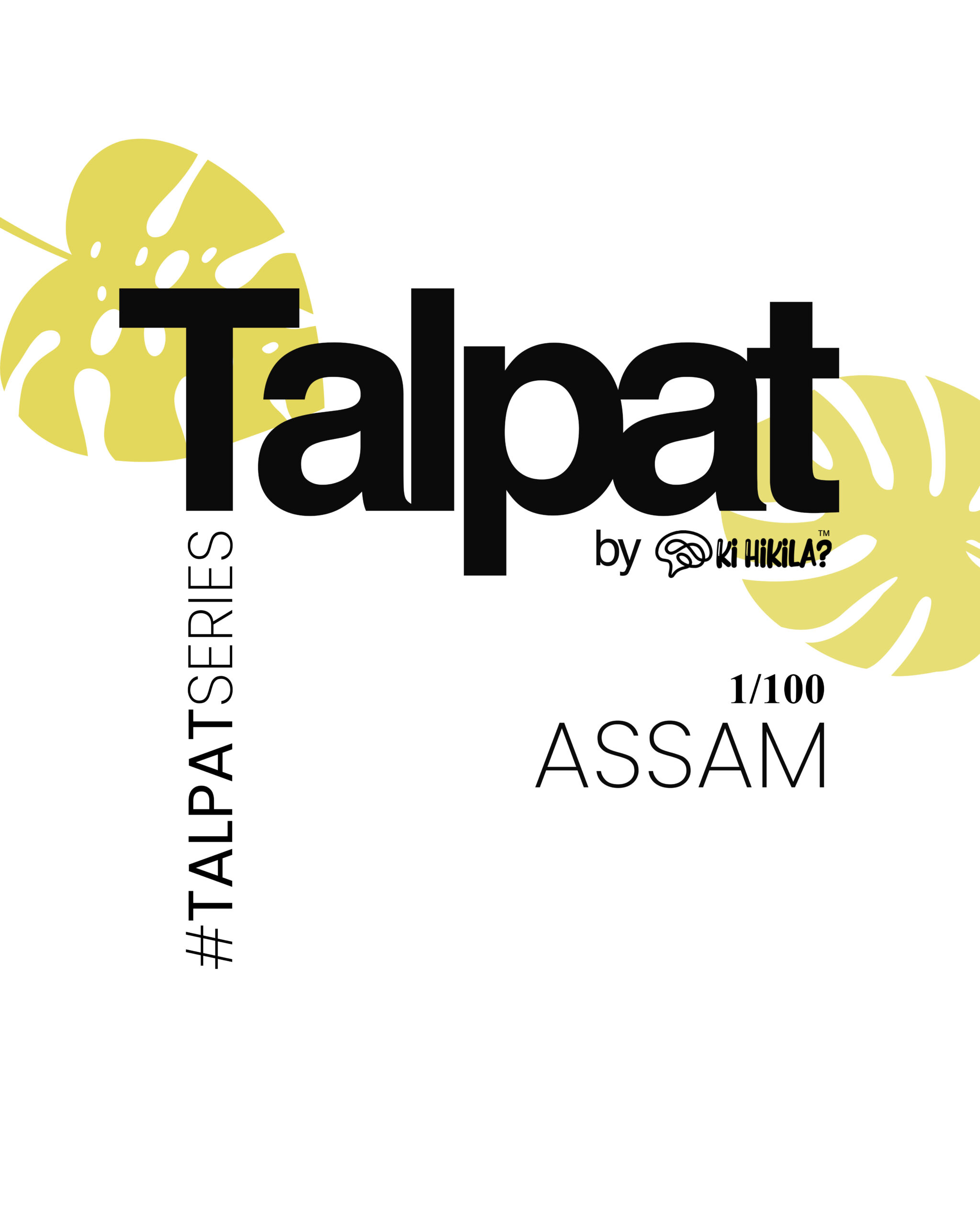Introduction
Madhya Pradesh, often referred to as the “Heart of India,” is a land steeped in history, culture, and natural abundance. Strategically located in the central part of the country, it serves as a vibrant canvas where centuries of dynasties, spiritual depth, architectural brilliance, and tribal traditions converge. From the intricate carvings of Khajuraho to the serenity of Sanchi’s stupas, and from the wildlife-rich forests of Kanha to the ghats of the Narmada, the state offers a rich and layered identity.
Its towns and cities reflect deep historical roots, while rural and tribal areas preserve ancient customs that continue to shape daily life. Whether you’re tracing the footsteps of rulers who built grand forts and temples, or observing the pulse of festivals, crafts, and flavors unique to each region, Madhya Pradesh is a living museum of India’s soul.
Brief about the Madhya Pradesh
Madhya Pradesh, often referred to as the “Heart of India” due to its central location, is one of the largest and culturally richest states in the country. Known for its deep historical roots, vibrant tribal traditions, and architectural wonders, the state is a fascinating blend of ancient heritage and evolving urban development. From prehistoric cave paintings in Bhimbetka to the majestic forts of Gwalior and the serene temples of Khajuraho, Madhya Pradesh offers a broad canvas of India’s past and present.
The state is also recognized for its ecological diversity, hosting some of the most famous national parks like Kanha and Bandhavgarh, which are vital tiger reserves. With a steadily growing economy, a mix of urban centers and rural heartlands, and a distinct cultural identity, Madhya Pradesh continues to play a vital role in shaping India’s historical and contemporary landscape.
Location and Geography
Madhya Pradesh is strategically located in the heart of India, bordered by five states — Uttar Pradesh to the northeast, Chhattisgarh to the southeast, Maharashtra to the south, Gujarat to the west, and Rajasthan to the northwest. Its central location makes it a key link between northern and southern India, and also between the western and eastern regions.
The state spans an area of 308,350 square kilometers, making it the second-largest state in the country by area. It falls largely in the plateau region of central India and is characterized by a mix of uplands, valleys, and forested areas.
- Latitude: Approximately 21.2°N to 26.87°N
- Longitude: 74°E to 82.9°E
Madhya Pradesh is known for its rich mineral resources, forest reserves, and river basins. The Vindhya and Satpura mountain ranges divide the state into distinct geographical zones and contribute to the diversity of its landscapes and ecosystems. The state is landlocked but features an intricate network of rivers and lakes that support its agriculture and biodiversity.
Geography and Climate
Madhya Pradesh is the second-largest state in India by area and is centrally located, bordered by Uttar Pradesh, Chhattisgarh, Maharashtra, Gujarat, and Rajasthan. Its terrain is remarkably diverse, featuring dense forests, plateaus, river valleys, and hill ranges that lend each region a distinct ecological character.
The state is drained by major rivers such as the Narmada, Tapti, and Chambal, each carving through fertile plains and forested valleys. The Vindhya and Satpura mountain ranges intersect its lands, creating dramatic landscapes and fostering rich biodiversity.
Madhya Pradesh experiences a tropical climate with three distinct seasons: summer, monsoon, and winter. Summers (March to June) can be quite hot, especially in the central plains, while monsoons (July to September) bring heavy rainfall, rejuvenating the forests and farmlands. Winters (October to February) are pleasant and ideal for travel, with cooler temperatures and clear skies, particularly in the hilly and forested regions.
Culture and Heritage
Madhya Pradesh is a cultural heartland where age-old traditions blend seamlessly with regional diversity. Its culture is deeply influenced by centuries of tribal heritage, royal dynasties, religious confluence, and folk expression. The state is home to several tribal communities such as the Bhil, Gond, Baiga, and Korku, whose customs, music, and lifestyle remain preserved and integral to the region’s identity.
This land has witnessed the rise and fall of prominent dynasties, including the Mauryas, Guptas, Paramaras, and Marathas. Their legacy is evident in architectural marvels like the Khajuraho Temples, the forts of Gwalior and Mandu, and ancient stupas of Sanchi, each showcasing a unique blend of artistic excellence and spiritual depth.
Folk dances like Matki, Gaur, and Grida are performed during festivals and social gatherings, while crafts such as Chanderi and Maheshwari weaving, Gond paintings, and terracotta work reflect the region’s artistic soul. Traditional music, often centered around devotional themes, continues to resonate in rural areas, supported by instruments like the dhol, algoza, and bansuri.
Madhya Pradesh’s cultural heritage is not just stored in monuments or museums; it lives in the everyday rhythms of its people, in the festivals they celebrate, and in the stories passed down generations.
Art and Handicrafts
Madhya Pradesh boasts a rich legacy of art and handicrafts that reflects its tribal roots, royal patronage, and deep spiritual traditions. Each region contributes a unique artistic expression shaped by local resources, beliefs, and cultural influences.
One of the state’s most iconic crafts is Gond painting, a vibrant form of tribal art known for its use of natural colors and intricate linework. Originally created on mud walls, these paintings have evolved to find a place on canvas and paper, narrating tales of nature, deities, and folklore. Similarly, Pithora paintings by the Bhil and Rathwa tribes showcase ritualistic themes with bold figures and vibrant palettes.

Textiles hold a prominent place in the art scene of Madhya Pradesh. The towns of Chanderi and Maheshwar are famous for producing exquisite handwoven sarees. Chanderi sarees, known for their lightweight texture and glossy finish, often feature traditional motifs like peacocks and floral vines. Maheshwari sarees, with their reversible borders and elegant color combinations, remain a timeless representation of royal aesthetics.
Terracotta craft, practiced across villages, involves creating detailed figurines, utensils, and decorative items using red clay. Woodcraft is also significant, with artisans in Bastar and Rewa carving masks, animal figures, and temple decor. Dokra art, a form of lost-wax metal casting, is another tribal craft that stands out with its raw, rustic finish and detailed human and animal forms.
Madhya Pradesh’s art scene is not only a reflection of beauty and tradition but also a source of livelihood for countless artisans, keeping ancient practices alive while adapting to contemporary appeal.
Cuisine
Madhya Pradesh’s cuisine is a rich blend of regional traditions, tribal influences, and royal legacies. It combines hearty street food with time-honored dishes, offering a diverse and flavorful culinary experience that varies across cities and communities.
In cities like Indore and Bhopal, street food culture thrives. Indore is especially renowned for its vibrant night food market, Sarafa Bazaar, where locals and visitors indulge in snacks like poha jalebi, khopra patties, garadu (deep-fried yam), and bhutte ka kees (grated corn spiced and cooked with milk). These dishes are humble yet packed with flavor and reflect the region’s fondness for spicy and tangy profiles.
Bhopal, with its strong Mughal heritage, showcases a contrasting culinary style. Non-vegetarian dishes dominate here, with slow-cooked delights like biryani, keema, rogan josh, and the locally famous bun kebab (spiced meat patty in a bun). The use of aromatic spices, dry fruits, and ghee in Bhopali cuisine gives it a rich and royal character.
The tribal regions of Madhya Pradesh bring in traditional recipes rooted in forest produce. Dishes made with mahua flowers, bamboo shoots, and wild herbs are common, especially among the Gond and Baiga communities. These ingredients, often cooked over open flames or in earthen pots, highlight the deep connection between food and nature.
Sweets also hold a special place in Madhya Pradesh. Treats like mawa bati, shrikhand, and malpua are enjoyed during festivals and special occasions. Local variations of peda and rabri offer indulgent finishes to any meal.
Madhya Pradesh’s food journey is not just about taste—it’s a reflection of its people, history, and landscapes, served generously with warmth and simplicity.
Dance, Music, and Arts
Madhya Pradesh holds a rich legacy of dance, music, and traditional arts that reflect its diverse cultural roots and tribal heritage. These expressions are deeply woven into the social fabric of the state, celebrated during rituals, festivals, and community gatherings.
Folk dances here are as varied as the communities that perform them. Among the most prominent is the Matki dance of the Malwa region, performed by women balancing earthen pots on their heads with grace and rhythm. The Tertali dance of the Kamar tribe involves women sitting and performing with small cymbals tied to their bodies, showcasing impeccable coordination. The Grida dance, native to rural areas, is performed after harvests and depicts gratitude for a bountiful crop, involving group formations and circular steps.
Tribal dances, particularly among the Gonds, Bhils, and Baigas, are characterized by energetic movements, face paint, and traditional instruments like drums and flutes. These dances are often spiritual, invoking nature and ancestral spirits.
In music, the state takes pride in its contributions to both folk and classical traditions. The Malwa and Bundelkhand regions echo with rustic songs that narrate folklore, heroism, and devotion. Instruments like the been, dhol, algoza, and dhapli accompany these performances, often passed down orally through generations.
Madhya Pradesh also has strong roots in Hindustani classical music, having been home to legendary musicians and royal patrons. Cities like Gwalior are historically significant, with the Gwalior Gharana being one of the oldest and most respected schools of classical music in India. The annual Tansen Music Festival, held in Gwalior, honors the great maestro Tansen with performances from renowned artists across the country.
In the visual arts, tribal painting styles like Gond art have gained national and international acclaim. These artworks often use symbols from nature, folklore, and everyday life, created with fine lines, dots, and vibrant natural colors. Mandana paintings, done by women on walls and floors, and Pithora paintings are also culturally significant and tied to rituals.
From rhythmic footwork and soulful tunes to earthy paintings and festive performances, the artistic landscape of Madhya Pradesh is an evolving canvas of identity, storytelling, and tradition.
Folk Stories or Legends
Madhya Pradesh, often regarded as the “heart of India,” has a rich oral tradition steeped in myths, legends, and folklore passed down through generations. These stories not only entertain but also reflect the values, beliefs, and history of the region.
Popular Folk Tales from Madhya Pradesh
- The Legend of King Vikramaditya (Ujjain):
One of the most enduring legends is that of the wise and valiant King Vikramaditya, believed to have ruled from Ujjain. Stories of his intelligence and fairness, especially the Vikram-Betal tales, are a vital part of Indian folklore. - Betal Pachisi (The Vampire Tales):
Originating in this region, these are a collection of 25 stories narrated by a ghost (Betal) to King Vikram. Each story ends with a riddle that tests the king’s wisdom. These tales were later adapted by several Indian writers and even featured in popular TV series. - The Myth of Bhojpur and King Bhoja:
Bhoja, the legendary ruler of Dhar and a patron of art and learning, is credited with building the grand yet unfinished Bhojeshwar Temple in Bhojpur. Folklore suggests he had supernatural powers and wisdom that even nature obeyed. - Tantya Bheel – The Robin Hood of Malwa:
A beloved tribal freedom fighter, Tantya Bheel became a folk hero by stealing from British colonial forces and distributing the loot among the poor and tribal communities. Songs and ballads about his bravery are still sung in the tribal belts of Madhya Pradesh. - Raja Harishchandra in Kalpi:
Though his tale spans many regions, local folklore in Madhya Pradesh honors Harishchandra’s unwavering commitment to truth, linking his story to spiritual sites within the state.
Flora and Fauna of Madhya Pradesh
Madhya Pradesh, known as the “Tiger State of India,” is home to one of the richest biodiversity zones in the country. Its vast forests, riverine landscapes, and plateaus provide a thriving habitat for numerous plant and animal species.
Native and Unique Plant Species
The state’s forested areas are largely covered with tropical dry and moist deciduous vegetation, particularly in regions like Satpura, Vindhya, and Maikal ranges.

- Sal (Shorea robusta) and Teak (Tectona grandis) are the dominant tree species in many regions.
- Other common flora include Mahua, Tendu, Bamboo, Palash (Flame of the Forest), and Bija trees.
- Medicinal plants such as Ashwagandha, Giloy, and Baheda are also found in abundance, especially in tribal forest zones.
These plants are vital not just ecologically but also economically, as they support local livelihoods through forest produce collection and Ayurvedic medicine practices.
Endangered or Iconic Animal Species
Madhya Pradesh is a key conservation area and supports many endangered and flagship species.
- Bengal Tiger: Found in reserves like Bandhavgarh, Kanha, and Pench, the tiger is the most iconic animal of the state.
- Leopard, Sloth Bear, Indian Bison (Gaur), Wild Dog (Dhole), and Striped Hyena are frequently spotted in the forests.
- The Barasingha (swamp deer), once endangered, has made a significant comeback due to conservation efforts in Kanha National Park.
- Avian species like the Indian paradise flycatcher (the state bird), vultures, eagles, and hornbills can also be seen.
Important National Parks, Sanctuaries, and Biosphere Reserves
Madhya Pradesh has an impressive network of protected areas that preserve its flora and fauna and promote eco-tourism.

- Kanha National Park – Famous for Barasingha and tigers, also a part of the Kanha Tiger Reserve.
- Bandhavgarh National Park – Known for its high tiger density and ancient fort ruins.
- Pench National Park – Inspired Rudyard Kipling’s The Jungle Book.
- Satpura National Park – Offers a unique terrain of hills, ravines, and river systems.
- Panna National Park – Known for diamond mines and successful tiger reintroduction programs.
- Madhav National Park – Located near Shivpuri, rich in both natural beauty and royal hunting legacy.
Biosphere reserves like Pachmarhi, Achanakmar-Amarkantak, and Panna also contribute to conservation and research, balancing ecological preservation with community participation.
Economy of Madhya Pradesh
Madhya Pradesh has a diversified and steadily growing economy that reflects its geographical advantages, natural resource base, and evolving industrial sectors. The state is often called the “heart of India” not only for its location but also for its balanced contribution across agriculture, industry, and services.
Main Industries
- Agriculture and Allied Activities
Agriculture is the backbone of the state’s economy, employing a majority of its population. The fertile plains, especially in the Malwa and Narmada regions, support large-scale farming.- Major crops: wheat, rice, maize, pulses, and soybeans.
- Commercial crops: sugarcane, cotton, and oilseeds.
- Madhya Pradesh is the largest producer of soybeans and pulses in India.
- Industrial Sector
Madhya Pradesh has made significant progress in industrial development with a focus on food processing, textiles, pharmaceuticals, and automobile components.- Industrial hubs: Indore, Bhopal, Gwalior, Jabalpur, and Pithampur.
- Pithampur is often referred to as the “Detroit of India” for its thriving automobile manufacturing sector.
- The state also has a robust cement and mining industry due to abundant limestone, coal, and bauxite reserves.
- Handicrafts and Cottage Industries
Traditional industries such as Chanderi and Maheshwari weaving, Dhokra metal craft, and terracotta products play an important role in rural employment and exports. - Emerging Sectors
IT and service sectors are growing, especially in cities like Indore and Bhopal, which are attracting startups and IT parks under the state’s investment promotion policies.
Agricultural Produce and Cash Crops

- Soybean, Wheat, and Pulses are the primary crops.
- Mustard, Gram, and Sugarcane are also widely grown.
- Madhya Pradesh’s agricultural production benefits from the extensive canal and irrigation systems supported by rivers like Narmada and Chambal.
Contribution to India’s GDP
- Madhya Pradesh contributes around 4% to India’s GDP, making it one of the key states in the Indian economy.
- It has consistently maintained a growth rate higher than the national average in recent years.
- The state’s focus on ease of doing business, infrastructure, and rural development has helped it attract both domestic and foreign investments.
Madhya Pradesh’s economic landscape reflects a healthy mix of tradition and modern growth, from agriculture and crafts to expanding urban industries.
Tourism in Madhya Pradesh
Madhya Pradesh is often called the “Heart of Incredible India” for good reason. The state offers a captivating blend of ancient temples, grand forts, scenic landscapes, spiritual centers, and vibrant wildlife. Whether you’re a history enthusiast, nature lover, or spiritual seeker, Madhya Pradesh has something remarkable to offer.
Top Attractions (Natural and Man-made)
- Khajuraho Temples (Chhatarpur): Known for their intricate and artistic erotic sculptures, these UNESCO-listed temples are a marvel of ancient Indian architecture.
- Sanchi Stupa (Raisen): One of the oldest stone structures in India, built during the Mauryan Empire, it holds immense significance in Buddhist history.
- Gwalior Fort: A massive hilltop fort complex with palaces, temples, and museums showcasing centuries of history.
- Orchha (Tikamgarh): A town frozen in time, with palaces and temples from the Bundela dynasty situated on the banks of the Betwa River.
- Bhimbetka Rock Shelters: A UNESCO World Heritage Site featuring prehistoric cave paintings, some over 30,000 years old.
- Marble Rocks at Bhedaghat (Jabalpur): Towering white limestone cliffs lining the Narmada River, known for their scenic beauty and boat rides.
UNESCO World Heritage Sites
- Khajuraho Group of Monuments
- Buddhist Monuments at Sanchi
- Rock Shelters of Bhimbetka
Each site showcases a different facet of India’s historical and cultural legacy, from prehistoric art to medieval temple architecture and early Buddhist influence.
Spiritual and Religious Sites
- Mahakaleshwar Jyotirlinga (Ujjain): One of the 12 sacred Jyotirlingas dedicated to Lord Shiva, attracting pilgrims year-round.
- Omkareshwar (Khandwa): A sacred island shaped like the Hindu Om symbol, home to another revered Jyotirlinga.
- Chitrakoot (Satna): Associated with the Ramayana, it is a spiritual retreat known for religious rituals and serene ghats.
- Bhojeshwar Temple (Bhojpur): An unfinished but massive Shiva temple, showcasing remarkable architectural vision from the 11th century.
Food Tourism (Local Cuisines and Street Food)
Madhya Pradesh offers diverse culinary experiences influenced by Malwa, Bundelkhand, Baghelkhand, and tribal regions.
- Poha-Jalebi (especially popular in Indore and Bhopal) is a beloved breakfast combo.
- Dal Bafla – a traditional baked wheat ball served with ghee and spicy dal, similar to Rajasthani dal bati.
- Bhutte ka Kees, Sabudana Khichdi, and Seekh Kebabs are regional favorites.
- Cities like Indore (Sarafa Bazaar) and Bhopal are known for their night street food markets that blend flavors from Mughlai and local traditions.
Tourism in Madhya Pradesh offers more than sightseeing—it’s an immersive journey through India’s history, spirituality, culture, and natural beauty.
Education and Institutions in Madhya Pradesh
Madhya Pradesh has been steadily advancing in the field of education, with a growing network of schools, colleges, universities, and research institutions. The state government has taken initiatives to improve literacy, enhance infrastructure, and promote higher education, especially in rural and tribal areas.
Literacy Rate
- According to the 2011 Census, Madhya Pradesh had a literacy rate of 69.32%.
- Male literacy was approximately 78.73%, while female literacy stood at 59.24%.
- While the state has made progress, especially in urban regions, efforts are ongoing to reduce the gender gap and improve educational access in tribal and backward districts.
Major Universities and Colleges
Madhya Pradesh is home to several prestigious institutions that cater to diverse fields such as technology, medicine, law, social sciences, and the arts.
Prominent Universities
- Indian Institute of Technology (IIT), Indore – A leading center for engineering and technology.
- Indian Institute of Science Education and Research (IISER), Bhopal – Focused on advanced scientific research and education.
- Maulana Azad National Institute of Technology (MANIT), Bhopal – One of India’s top engineering colleges.
- Devi Ahilya Vishwavidyalaya, Indore – A major university offering courses in sciences, management, law, and humanities.
- Rani Durgavati University, Jabalpur, and Barkatullah University, Bhopal – Notable for their arts and social sciences programs.
Medical and Law Institutions
- AIIMS Bhopal (All India Institute of Medical Sciences) – One of the premier medical institutions in the country.
- National Law Institute University (NLIU), Bhopal – One of the top law schools in India offering integrated and postgraduate programs.
Educational Achievements and Rankings
- Madhya Pradesh has implemented schemes like the Mukhya Mantri Medhavi Vidyarthi Yojana, which provides financial support for meritorious students.
- The Bhoj Open University provides distance learning opportunities for those who are unable to pursue full-time education.
- Cities like Indore and Bhopal are emerging as education hubs, attracting students from across central India due to improved infrastructure and academic options.
The state’s growing focus on education is aimed at bridging socio-economic gaps and building a skilled, knowledgeable workforce.
Transport and Connectivity in Madhya Pradesh
Madhya Pradesh, located in the central part of India, is well-connected to the rest of the country through a growing network of roads, railways, and air transport. Its strategic location makes it a key transit hub for both passengers and freight traffic.
Roads, Highways, and Railways
Road Connectivity
- Madhya Pradesh has a vast network of over 1.6 lakh kilometers of roads, including national highways, state highways, and rural roads.
- Major National Highways passing through the state include NH-3 (Agra–Mumbai), NH-44 (Srinagar–Kanyakumari), and NH-52.
- The state’s Expressways like the Indore–Dewas and Bhopal–Indore routes ensure faster movement between major cities.
- Road transport is robust with state-run buses under the Madhya Pradesh State Road Transport Corporation (MPSRTC) and several private operators.
Railway Connectivity
- Madhya Pradesh is served by important railway zones like West Central Railway (WCR), Central Railway, and Western Railway.
- Major railway junctions: Bhopal, Jabalpur, Itarsi, Katni, Indore, Gwalior, and Ratlam.
- Itarsi Junction is one of India’s busiest railway junctions and a major railway link between north and south India.
- Superfast trains like the Shatabdi Express and Rajdhani Express connect MP with metros like Delhi, Mumbai, and Kolkata.
Airports and Ports (if applicable)
Airports
- Devi Ahilya Bai Holkar Airport, Indore (IDR) – The busiest airport in Madhya Pradesh, offering domestic and limited international connectivity.
- Raja Bhoj Airport, Bhopal (BHO) – Connects Bhopal with major Indian cities.
- Other operational airports include:
- Gwalior Airport
- Jabalpur Airport
- Khajuraho Airport (popular among foreign tourists visiting heritage sites)
- Several smaller airports and airstrips are being developed under the UDAN scheme to boost regional air travel.
Ports
- Since MP is landlocked, it does not have seaports. However, it utilizes nearby ports such as Jawaharlal Nehru Port (Mumbai) and Kandla Port (Gujarat) for trade and cargo transit via rail and road.
Public Transport Systems
- In major cities like Indore and Bhopal, intra-city transport is managed through city buses, autorickshaws, and app-based cabs.
- Indore BRTS (Bus Rapid Transit System) is one of the most successful in India, offering a rapid and organized urban transport experience.
- Metro rail projects are under development in Bhopal and Indore, expected to enhance urban mobility.
Madhya Pradesh’s improving transport infrastructure is playing a critical role in boosting commerce, tourism, and daily life across its urban and rural areas.
Fun Facts & Trivia about Madhya Pradesh
Madhya Pradesh isn’t just rich in culture and history—it also holds many unique records, fascinating traditions, and contributions to India’s national identity. These facts help paint a more vibrant and relatable picture of the state for curious readers.
“Firsts” or “Biggest” Records
- Largest Forest Cover in India: Madhya Pradesh has the highest forest area in India in terms of geographical percentage, making it a haven for biodiversity.
- Tiger State of India: It houses the largest tiger population in the country, thanks to reserves like Bandhavgarh, Kanha, and Pench.
- Home to the Largest Tribal Population: MP has the highest tribal population in India, including major tribes like Gond, Bhil, Baiga, and Sahariya.
- Asia’s Largest Solar Plant: The Rewa Ultra Mega Solar Plant is one of the biggest single-site solar power projects in Asia.
- Omkareshwar is one of only two Jyotirlingas in India situated on an island (the other is in Nageshwar).
Unique Cultural Facts
- Mandana and Gond Art: The intricate Mandana floor designs and Gond tribal art are both traditional and increasingly gaining global attention for their aesthetic and storytelling value.
- Bhopal – The City of Lakes: Bhopal is known for its blend of Mughal and Hindu architecture and the presence of both natural and artificial lakes.
- Indore – India’s Cleanest City: Indore has consistently topped the Swachh Survekshan rankings as the cleanest city in India for several years in a row.
Famous Personalities from Madhya Pradesh
- Lata Mangeshkar (Indore): Legendary playback singer and Bharat Ratna awardee.
- Atal Bihari Vajpayee (Gwalior): Former Prime Minister of India.
- Kailash Satyarthi (Vidisha): Nobel Peace Prize laureate for child rights activism.
- Tansen (Gwalior): One of the greatest musicians in Indian classical tradition and a jewel in Akbar’s court.
- M.F. Husain (Pandharpur, spent formative years in Indore): One of India’s most iconic painters.
- Salman Khan (Indore): Prominent Bollywood actor.
- Raghuram Rajan (Bhopal): Former Governor of the Reserve Bank of India and a renowned economist.
These facts highlight Madhya Pradesh’s diverse contributions to India’s cultural, environmental, and historical richness.
Conclusion
Madhya Pradesh stands as the heart of India not just geographically, but culturally, historically, and ecologically. From ancient cave paintings and majestic temples to dense forests, tribal traditions, and vibrant cities, the state offers a complete experience that bridges India’s glorious past with its dynamic present.
It is a place where heritage and progress coexist—home to UNESCO World Heritage Sites and modern educational institutions, sacred rivers and solar energy hubs, tribal artistry and classical music. Whether you’re a history buff, nature lover, art enthusiast, or spiritual seeker, Madhya Pradesh welcomes you with stories, sights, and sounds that leave a lasting impression.
Understanding Madhya Pradesh is to understand the soul of India—layered, diverse, resilient, and timeless.
FAQ’s:
What is Madhya Pradesh famous for?
Madhya Pradesh is known for its rich history, wildlife, and cultural heritage. It is home to several UNESCO World Heritage Sites like Khajuraho and Sanchi, and renowned tiger reserves such as Bandhavgarh and Kanha. It is also called the “Heart of India” due to its central location.
Which are the top tourist attractions in Madhya Pradesh?
Some of the top tourist attractions include:
Khajuraho Temples
Sanchi Stupa
Kanha and Bandhavgarh National Parks
Ujjain’s Mahakaleshwar Temple
Bhimbetka Rock Shelters
Orchha Fort
Gwalior FortWhat is the best time to visit Madhya Pradesh?
The best time to visit Madhya Pradesh is during the winter months (October to March) when the weather is pleasant and ideal for sightseeing, wildlife safaris, and festivals.
What is the capital of Madhya Pradesh?
The capital of Madhya Pradesh is Bhopal, a city known for its lakes, historic architecture, and cultural institutions like the Bharat Bhavan and the Tribal Museum.
Which languages are spoken in Madhya Pradesh?
The primary language is Hindi, which is spoken widely across the state. Other regional dialects include Malwi, Bundeli, Bagheli, Nimadi, and Gondi in tribal areas.
How many tiger reserves are there in Madhya Pradesh?
Madhya Pradesh has six tiger reserves, including Kanha, Bandhavgarh, Pench, Satpura, Panna, and Sanjay-Dubri. It has the highest number of tigers among all Indian states, earning it the title of “Tiger State of India.”
What is the traditional food of Madhya Pradesh?
Popular dishes include: Poha and Jalebi (Indore), Dal Bafla, Bhutte ka Kees, Rogan Josh, Tribal cuisines like Chakki ki Shaak and Sabudana Khichdi are also notable.
What are the major festivals celebrated in Madhya Pradesh?
Some widely celebrated festivals include: Diwali and Holi, Navratri, Lokrang Festival (Bhopal), Khajuraho Dance Festival, Tribal festivals like Bhagoria Haat in western Madhya Pradesh.
Is Madhya Pradesh safe for tourists?
Yes, Madhya Pradesh is generally considered safe for tourists. Major cities and tourist spots have good security and infrastructure. As always, travelers should take standard safety precautions, especially when exploring remote areas.
How is the connectivity and transport system in Madhya Pradesh?
Madhya Pradesh is well-connected via railways, highways, and domestic airports. Cities like Indore and Bhopal have frequent flights and reliable road and rail networks. Urban transport in cities includes buses, auto-rickshaws, and ride-sharing apps.












